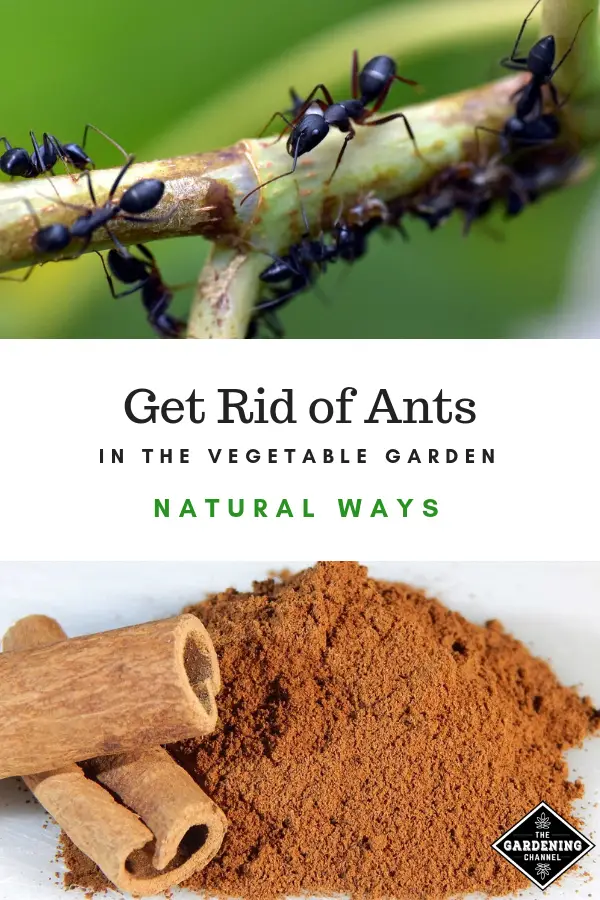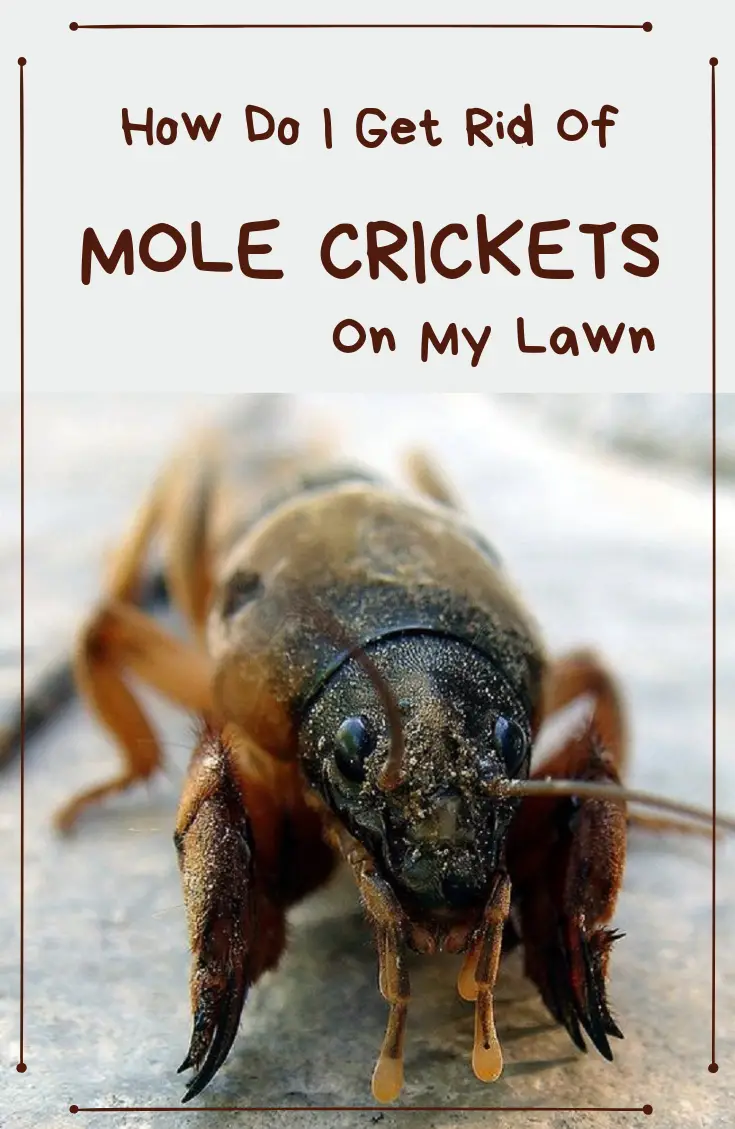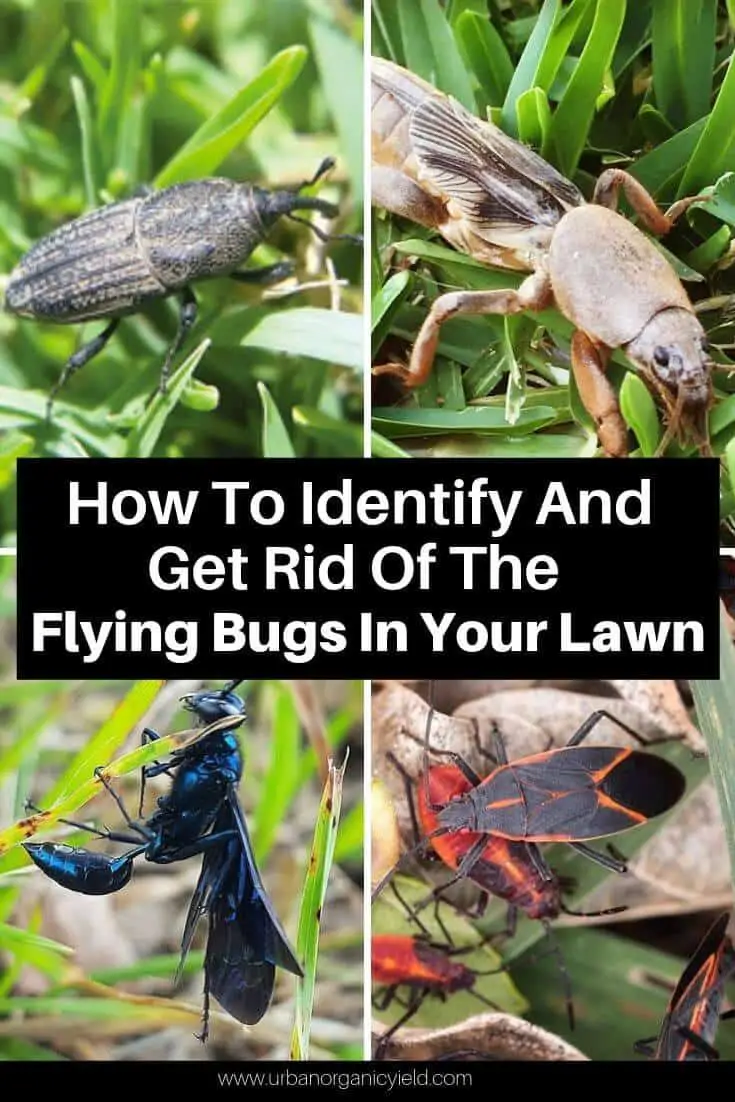Less Common Lawn Pests
Wire worm & False Wire Worm
The Wire Worm and False Wire Worm is the larvae stage of the click-beetle and causes damage to underground roots and stems. They will also eat seed embryos preventing germination. An application of a high concentrate of insecticide will help to control them.
Two spotted mite
Couch grass mite
Mole crickets
Will Grass Grow Back After Chinch Bug Infestation
Yes, with proper care and maintenance, you can always regrow your lawn and repair any chinch bug damage done to your lawn.
Of course, this vastly depends on the damage that has already been done. Well cover more about this later. Your first objective will be to get them in control rather than repairing your lawn!
Why Is My Backyard Full Of Flies
House flies feed on decaying organic material and waste, which includes kitchen garbage, pet waste and even animal food. For this reason, you will often see flies swarming around trash cans, outdoor restrooms and outdoor animal enclosures. Left unchecked, flies can produce two or more generations per month.
You May Like: How To Get Rid Of Ferns In Yard
Bug Killer And Triazicide
If the pests get really bad, consider using standard bug killer made for chinch bugs and other lawn pests. Triazicide is another popular choice that works well for chinch bugs.
What pesticide kills chinch bugs?
You should also look into Sunniland, Bayer, Ortho, and others. Do your research should you go down this route since now youre not using natural methods anymore and this could pose a harmful substance to your lawn.
Suppose the bugs are going crazy on your lawn, what do you do?
The best way to go about this is to use insecticidal soap, which you can grab at any garden shop. Go for the organic variety if possible, or at least all-natural one. A lot of brands offer a natural solution which will be much better for your lawn, children, and pets.
Look for solutions containing bifenthrin and/or acephate. Also, look for something in a granulated form rather than a spray. You can apply granular with a spreader thats used for fertilizer. Be sure to use as directed until the population of the pests reduces significantly.
How To Manage Chinch Bug Infestations

Once you spot red and black chinch bugs, you will immediately want to get started on removing them. For eco-mindful gardeners, we understand that spreading harmful insecticides on your lawn is less than optimal. Fortunately, there are a plethora of organic, healthy ways to kill chinch bugs and prevent them from coming back.
Read Also: Where To Sell Used Lawn Equipment
What Is The Fastest Way To Get Rid Of Gnats
5 Ways to Get Rid of Gnats Make an apple cider vinegar trap. Place a few tablespoons of apple cider vinegar, a few drops of dish soap, and a tablespoon of sugar in a bowl and stir the contents. Make a fruit trap. Pour diluted bleach down the sink or tub drain. Make a candle trap. Hire a professional pest control company.
Apply Nematodes To Control Grubs Naturally
You can apply nematodes to get rid of grubs in the lawn naturally and within a few days. Beneficial nematodes are very tiny roundworms that move in the moist soil under your turf and enter into the grubs where they release pathogens that attack the pests and kill them.
Heres how to use beneficial nematodes to eliminate grubs naturally:
- Choose beneficial nematodes that work against grub worms.
- Mix the nematodes with distilled water in a lawn or garden sprayer.
- Water your lawn adequately to keep it moist.
- Spray the nematodes on a grub-infested lawn in the evening.
Pro tip: Apply nematodes only in the evening because they get killed by light and heat. Also, make sure the soil temperature is above 60°F before applying this natural treatment. Water the lawn 15-20 minutes after applying the nematodes for the best results.
Repeat the application after two weeks for the best results in controlling grubs in your lawn.
The beneficial nematodes, also called entomopathogenic nematodes, are very effective and mobile in moist environments. They seek and follow their hosts and infect them. Soon after, the white grub population in the lawn will be destroyed.
You May Like: How To Use Bioadvanced Fungus Control For Lawns
Take Advantage Of Kitchen Remedies For Pests
There are some very helpful pest remedies on your kitchen counters such as orange and banana peels, cinnamon, and garlic. Garlic especially is a very efficient remedy for bugs. You can put garlic in hot water and leave it overnight.
You can use hot peppers and ginger as a spray on your garden plants, they are also very helpful in getting rid of bugs.
Increased Bird Activity On Your Lawn Can Be A Sign You Have Bugs
Birds are wonderful guests to our homes and gardens. Its actually a great sign you have done something right in your garden. While birds foraging on lawn is natural, they can become a pest when they begin digging and making a mess of the lawn.
The presence of birds on the lawn can be a sign there is a bug infestation, as birds will flock in numbers if there is enough bugs for them all to feed on. They can be our friend by removing bugs and weeds, but destructive behaviour begins when bugs are in abundance.
Recommended Reading: How To Get Rid Of Wild Violets In Your Lawn
When Should I Treat My Lawn For Chinch Bugs
Summer is the best time to treat your lawn for chinch bugs. This is when lawns have the greatest number of bugs and you can reduce the population of immature chinch bugs before they reproduce.
If you have a heavy infestation, your lawn may need a second treatment 2-3 weeks later.
Note: You can treat your lawn for chinch bugs in the spring as well, when the bugs are just starting to spread. But if spring weather is cool and wet, treatment may not be necessary the chinch bugs may die naturally as they dont like these conditions.
Attack Them At The Lawn Grub Phase
- Pin
You’re relaxing with a drink on your porch when, all of a sudden, you’re hit by a large flying insect. You look down and see that the culprit was a beetlemore specifically, a June bug. These beetles are easily recognizable: 1/2- to 1-inch-long reddish-brown bugs with wings that form a hard shell when the insect isn’t in flight. The beetles themselves don’t do any harm to people, though the sticky legs can give you a shiver if the bug clings to you, and the sensation of stepping on one is decidedly unpleasant.
Harmless though the beetles are to people, it’s a different matter when it comes to a lawn or landscape. June bugs are the adult phase of the various species of insects in the Phyllophaga genus. The insect most associated with the common name of “June bug” is Phyllophaga longispina, although there are several other species also known by that name.
While the adult flying beetles do cause some damage to plants by feeding on the leaves and stems, the real problem lies in the immature larval phase of these insects. Known as white grubs, these larvae can wreak serious damage on the roots of lawn turfgrasses and other plants. In addition to P. longispina, a number of other common beetles produce white grubs in their larval stage, including Japanese beetles . Fortunately, all of these beetles can be handled in much the same way.
Read Also: Trugreen Mowing
Does Vinegar Keep Bugs Away
Vinegar is one of the best ingredients to make a pest control spray. It is effective in repelling ants, mosquitoes, fruit flies, and many others. Creating a mix is quite simple and is considered safe for humans and pets. You can deter bugs, especially spiders, from entering your home with white vinegar.
Ecoclears Stop Bugging Me

One tool all gardeners should have in their toolbox is EcoClears Stop Bugging Me! Lawn & Garden. This incredible insecticide is all-natural and chemical-free, created explicitly for the pre-and post-treatment of lawn insect infestations. It works immediately to eliminate insect infestation while remaining safe for you, your family, your furry friends, and of course, the environment.
Read Also: Coyote Statue To Scare Geese
Replace Incandescent Bulbs With Leds
If your patio or deck is adorned with twinkling string lights, you may want to rethink the bulbs youre using. Theres no doubt that bugs will be attracted to light sources no matter what, but more so to bright and hot lights more than other styles.
Gaughan suggests switching out any traditional incandescent bulbs with warm-colored LEDs, like orange or yellow hues. These outdoor LED string lights create a warmer glow than an incandescent counterpart.
How To Get Rid Of Lawn Grubs Beetles And Pests
To get rid of lawn grubs and other pests, an application of insecticide is necessary. Depending on the severity of the infestation, you may need more than one application. There are a few different products on the market, we recommend Acelepryn GR, Grub Guard or Amgrow Patrol.Ensure you follow the product label and directions during application and that the product is safe to use on your lawn variety
Also Check: Rent Riding Mowers
Spray Leafy Plants With Neem Oil
Invite Bats Into Your Yard
Although many of us might be frightened of bats, they are actually an enormous asset to our yards. Did you know that these creatures can eat over 6,000 insects in the course of a single night? If you have an insect problem, it could be that you dont have enough bats living in and around your yard.
To correct this problem, consider building a small house for the bats to come live in. By placing one of these houses up in a tree, youre encouraging bats to frequent your yard and help control the bug population while theyre at it.
Don’t Miss: How To Get Rid Of Violets
How Do I Get Rid Of Gnats In My Yard Naturally
An easy manner to draw gnats in is via using a bit of aggregate of vinegar and dish soap. Gnats are interested in the candy smell, however when they land, the dish soap will stay them from escaping. This is an effective way to get rid of a gnat downside, particularly if they find their approach into your home or if they swarm round your deck.
How Can I Get Rid Of Chinch Bugs In My Lawn
A good way to get rid of chinch bugs is through regular lawn management, including moderate fertilization to keep your grass outgrowing chinch bug damage.
Dont over fertilize though. Too much nitrogen can increase chinch bug infestation and can cause other, larger problems such as fertilizer runoff.
The best long-term approach to a healthy lawn is by maintaining healthy soil, regular irrigation, and proper mowing.
You can also encourage beneficial predators to visit your lawn . Low populations of chinch bugs in a healthy lawn may be controlled naturally by insect predators that eat chinch bugs, such as:
- Ground beetle species
- Big-eyed bugs .
Be sure not to use harmful chemical treatments that kill indiscriminately. If you wipe out populations of beneficial insects, youre more likely to see a surge in garden pests.
Don’t Miss: Rabbits Destroying My Lawn
What Are Surface Dwelling Grubs
Lawn Grub is a common name for surface dwelling caterpillars. Other names are sod webworm, army worm and cutworm that feed on the lawn leaves then become moths after their pupae stage. Each stage of the grubs life all cause similar issues on your otherwise healthy lawn. The moths are extremely fussy about where they lay their eggs, the healthiest lawn will be the spot for them. The caterpillars will then eat the best and leave the rest. To best understand how to control and prevent damage it is best to understand their life cycle.
If you begin to see brown or straw like patches through your lawn, or the leaves on your runners begin to disappear you could have an infestation of lawn grubs. Small green droppings will also become present which is basically your old lawn appearing. Caterpillars often feed at night so you often wont see them. However you may see white/grey moths flying over your lawn or garden area, this could be an indication of a potential lawn grub problem. Lawn grubs are a seasonal issue and unfortunately they can affect your lawn multiple times throughout one season.
If you have had a minor infestation and the lawn is still in good condition the moths are likely to come back which will require a repeat treatment. You can follow up with fertilising to fast track recovery, make sure you fertilise in autumn to set your lawn up for winter and spring.
Apply A Curative Insecticide In September

Although it’s always better to avoid chemical insecticides if possible, a serious grub and June bug infestation is one case in which insecticides may be necessary if you want to save your lawn. The most effective chemical remedy is to apply a product that contains carbaryl or trichlorfon in September. These are contact chemicals that will kill grubs and prevent them from pupating into adults. And, in September, the grubs are still close enough to the surface to be killed by the insecticide.
These are known as curative chemicals rather than preventative since they will kill the insects in all their life cycle phases. Applied in September, these insecticides will kill as many as 80 percent of the grubs, thereby greatly reducing the following year’s June bug emergence.
Make sure to water in these chemicals thoroughly. Toxicity to humans and most animals is moderate but well documented. Carbaryl is toxic to fish, so avoid applying it where run-off to lakes and rivers is possible. Trichlorfon in large concentrations is a central nervous system stimulant and should be used cautiously. Immediate watering will remove the chemical from the surface and reduce the hazard.
Don’t Miss: Recover Lawn Chair
Why Systemics Are Better For Lawn Care Than Pyrethroids
While pyrethroids or contact insecticides work for chinch bug control you have to make an application come back in a week inspect for chinch bugs and nymphs and re spray if you find any, come back in a week and do it again. This is the only way you can be sure you got control and then for how long. In addition to that chinch bugs are now resistant to many pyrethroids.
Systemics targets the chinch bug directly and indirectly, it acts as contact when the chinch bug come in contact with the insecticide but gives you long term control of nymphs and adult because it enter the plants vascular system through the roots. When a cinch bug is born it will have to feed on the plant which is contaminated with the pesticide, when it feeds that is its last meal. End of story.
With systemics you get long term control and quick knock down. In the past 6 years since we have used systemics we only get an average of 2 call backs per route per year.
We apply it every 2 months at the mid dose range. I put no trust in any product I trust in my knowledge, experience and expertise. I inspect, monitor and repeat to ensure the products are working.
We use and recommend Dominion 2L why because it works as well as any brand name systemic at a lower cost.
One 27.5 bottle is enough to treat 55,000 square feet at the mid level dose.
Recommended Reading: Donate Old Lawn Mower
What Are Grubs And How Do They Damage Lawns
Grubs are the larval stages of different beetle species, including Japanese beetles, June beetles, and European chafers.
These pests have soft, white bodies with a set of legs near their heads. When disturbed, they curl into a C shape.
Dormant during the winter, grubs become active when the weather starts to warm up. During the spring and early summer, grubs eat the roots of grass and other foliage and organic matter, causing extensive plant damage.
As lawn grubs turn into adult beetles, they leave the soil to mate and lay eggs. Adult beetles have a 13-year lifecycle.
Adult beetles lay their eggs near their feeding sites in July and August, creating new grubs that dig into the soil and eat grass roots, perpetuating the infestation.
Fortunately, it is possible to control grubs with methods like milky spore disease, which well discuss more later in this post.
You May Like: Honda Hrx217k5vka Lowes
Toilet Paper Rolls And Drinking Straws
You dont always need a non-toxic repellent spray to keep pests away from your plants naturally. You can simply make barriers so that the pests cant get to the plants. For example, planting seedlings or root veggies like carrots in toilet paper rolls will protect them against cutworm. You can also protect seedlings against cutworm by cutting drinking straws, preferably the biodegradable kind, into pieces of about two centimetres and then slicing them open lengthwise. Place a piece of straw around each seedling, almost like a collar.
